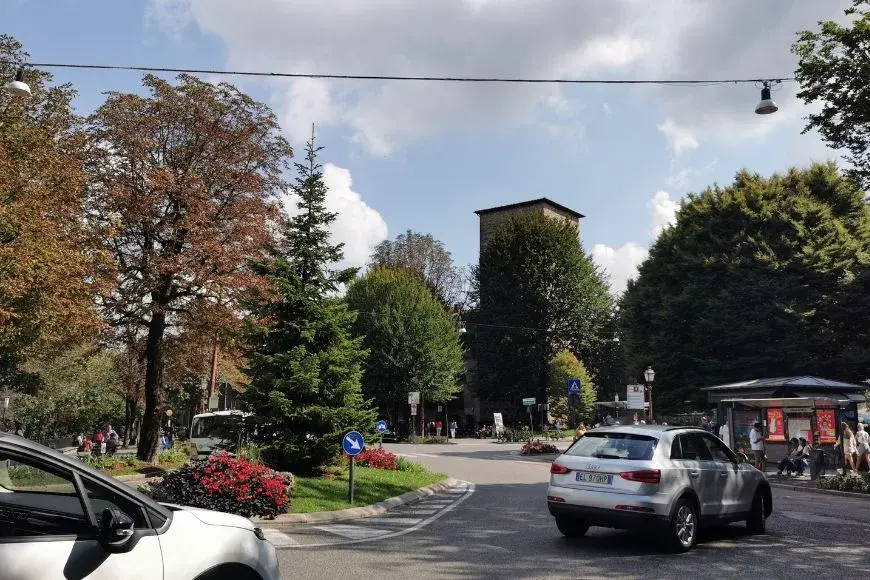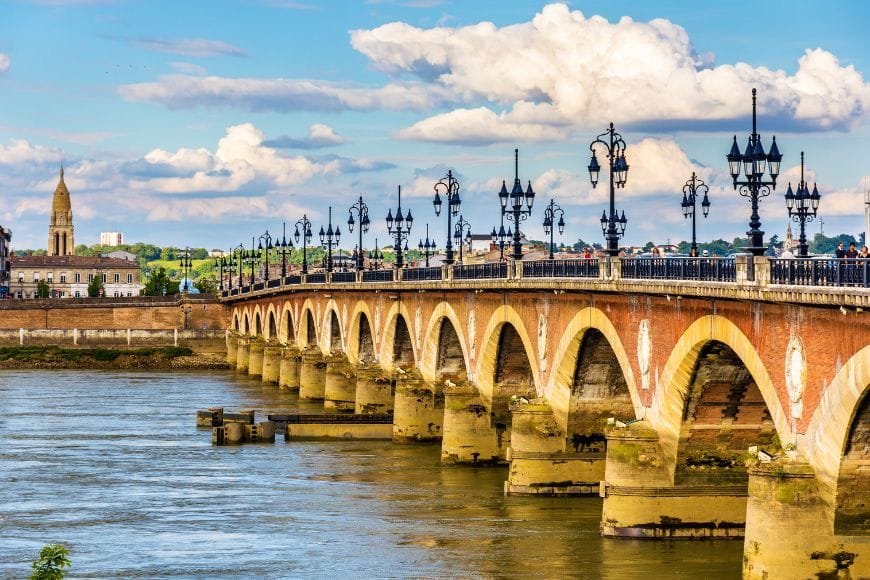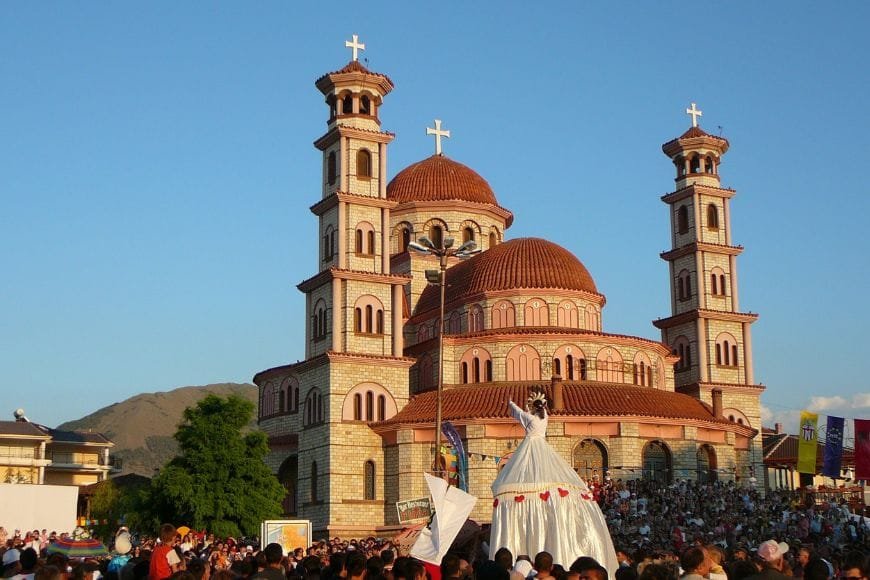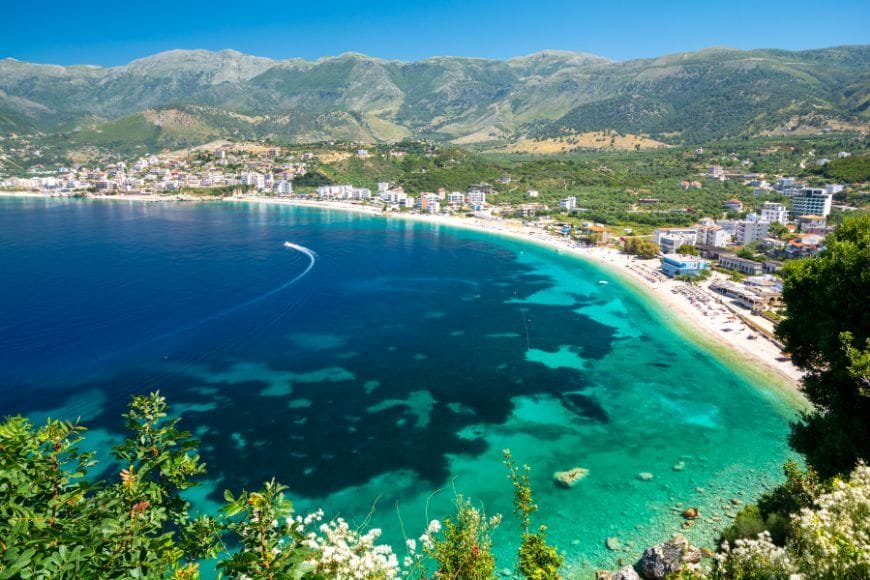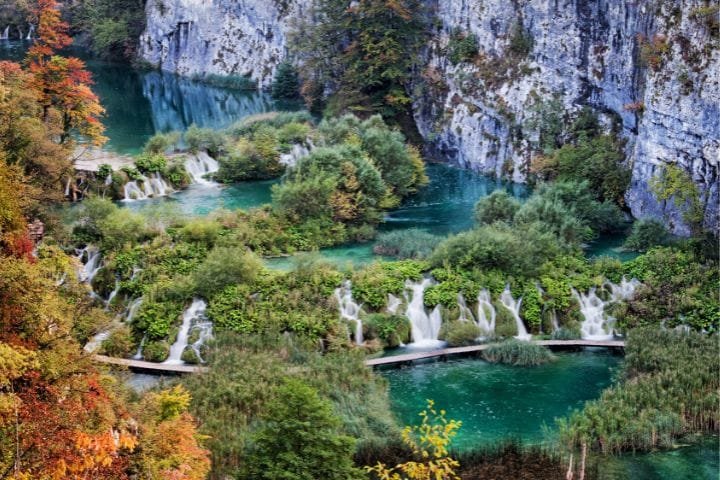7 Day Montenegro Road Trip Itinerary: Best Stops, Routes & Tips (2025 Guide)

by Abu | Last Updated December 4, 2025

Montenegro may be one of Europe’s smallest countries, but don’t let its compact size fool you – this Balkan gem packs an incredible diversity of landscapes, cultures, and experiences into a territory smaller than Connecticut that will challenge your photography skills and redefine your expectations of what a week-long road trip can deliver.
Having explored Montenegro extensively over the past six years through multiple balkan road trips ranging from quick weekend escapes to comprehensive Balkan adventures, I’ve discovered that seven days provides the perfect timeframe for experiencing this country’s remarkable contrasts: dramatic fjord-like bays that rival Norway’s coastline, pristine mountain lakes surrounded by peaks exceeding 2,500 meters, medieval towns preserving centuries of heritage, and some of Europe’s last wild rivers cutting through untouched wilderness.
My first Montenegro road trip was supposed to be a simple extension of a Croatian coastal adventure, but the country’s stunning natural beauty and authentic cultural experiences convinced me to return repeatedly, each time discovering new hidden gems and developing a deeper appreciation for Montenegro’s unique position at the crossroads of Mediterranean, Balkan, and Alpine driving regions — where scenic mountain roads come with their own set of tips and challenges.
Whether you’re seeking outdoor adventures in dramatic mountain parks, cultural immersion in UNESCO World Heritage towns, or authentic encounters with traditional communities where hospitality remains genuine, this 7 day Montenegro road trip itinerary delivers experiences that satisfy every traveler while maintaining authenticity that mass tourism hasn’t yet diminished.
🧭 Plan Your Montenegro Driving Route
Essential travel knowledge before hitting the road.
• How to combine Montenegro into a Balkan road trip → How to Plan a Balkan Road Trip
• Understand tolls, e-vignettes & border rules when entering from Croatia → Balkan Toll Roads Guide
• What to expect from mountain switchbacks + coastal tunnels → Balkan Road Conditions Guide
Day 1-2: Budva and Southern Coast – Beach Towns and Coastal Culture
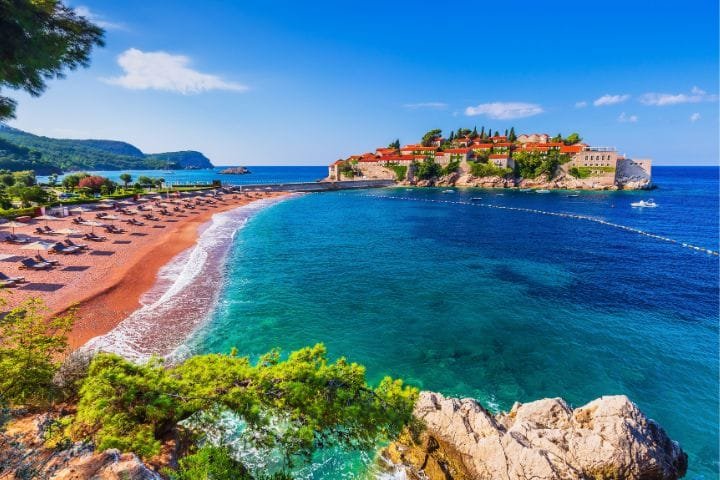
Budva Old Town serves as the perfect introduction to Montenegro’s coastal culture with medieval walls, Venetian architecture, and narrow cobblestone streets that create an intimate atmosphere despite the town’s popularity with international visitors. The old town’s position on a small peninsula provides spectacular sunset views and easy walking access to beaches and restaurants.
Budva Riviera beaches offer diverse experiences from the famous Jaz Beach hosting international music festivals to the intimate Mogren Beach accessible through a scenic coastal path. Each beach maintains a distinct character while providing crystal-clear Adriatic waters and dramatic mountain backdrops.
During my first visit to Jaz Beach, I was amazed by how a beach could combine festival infrastructure with pristine natural beauty – the contrast between massive concert stages and untouched limestone cliffs perfectly captures Montenegro’s ability to blend modern tourism with authentic landscapes.
Sveti Stefan iconic island resort, creates Montenegro’s most photographed scene, though the island itself is restricted to resort guests. The mainland viewpoints provide spectacular photography opportunities that showcase this medieval fishing village transformed into luxury accommodation.
Petrovac traditional fishing town, maintains an authentic coastal culture with family-run restaurants serving fresh seafood, traditional architecture, and a relaxed atmosphere that contrasts with Budva’s bustling energy. The town’s protected bay creates calm swimming conditions perfect for families.
Coastal accommodation ranges from luxury beach resorts to family-run guesthouses that provide authentic hospitality. I prefer staying in traditional stone houses converted to small hotels, where owners share local knowledge and provide a genuine Montenegrin welcome.
Southern coast highlights:
- Budva Old Town, medieval architecture, and sunset viewpoints
- Diverse beach experiences from festival venues to intimate coves
- Sveti Stefan photography opportunities and luxury resort views
- Petrovac’s authentic fishing village atmosphere and family dining
- Traditional accommodation providing genuine local hospitality
Plan Your Trip with Our Favorite Booking Tools
Day 3: Kotor Bay – Europe’s Southernmost Fjord
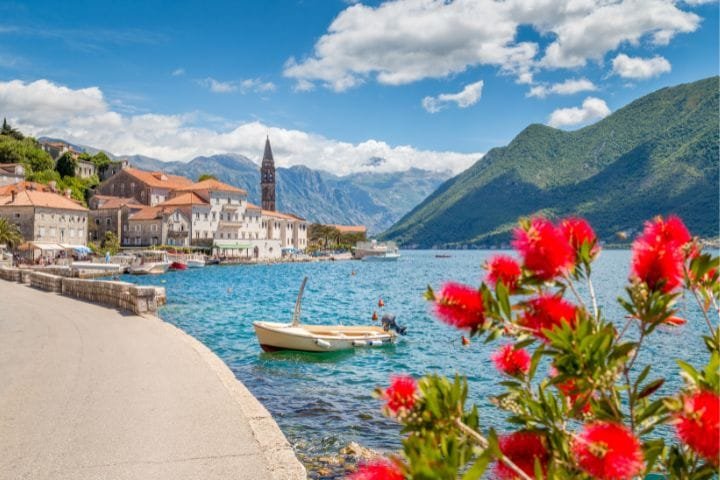
Kotor Old Town represents one of Europe’s best-preserved medieval cities, with UNESCO World Heritage status recognizing its remarkable architecture and historical significance. The city’s position at the fjord’s head creates dramatic mountain backdrops while narrow streets preserve centuries of Venetian and Byzantine influences.
City walls climb to St. John’s Fortress, providing spectacular panoramic views over Kotor Bay, though the steep ascent requires good fitness and early morning timing to avoid midday heat. The 1,350 steps reward climbers with photography opportunities that capture the bay’s fjord-like beauty.
My first walls climb in Kotor happened during late afternoon, and watching the sun set over the bay while surrounded by ancient fortifications created one of those perfect travel moments that justify every challenging step of the ascent.
Perast baroque town showcases 18th-century architecture and maritime heritage in a perfectly preserved setting where traditional stone palaces reflect in calm bay waters. The town’s compact size allows easy exploration while maintaining an authentic atmosphere.
Our Lady of the Rocks island, with its artificial creation story and baroque church, provides unique cultural experiences accessible by traditional boats operated by local families. The 10-minute boat ride includes stories about the island’s creation and religious significance.
The scenic Bay of Kotor driving route connecting Kotor to Perast and beyond offers constant mountain and water views that create some of Europe’s most spectacular coastal driving. Multiple viewpoints and photo stops allow appreciation of the bay’s dramatic scale.
Traditional seafood dining in Kotor takes advantage of the bay’s protected waters and centuries-old fishing traditions. Family restaurants serve dishes using recipes passed down through generations, often featuring fish caught that morning.
Kotor Bay experiences:
- UNESCO Old Town exploration with medieval architecture and history
- City walls climb, providing panoramic fjord views and photography
- Perast, a baroque town demonstrating preserved maritime heritage
- Our Lady of the Rocks cultural island experience with local boat rides
- Scenic driving route with constant mountain and water vistas
Day 4: Cetinje and Lovćen National Park – Royal Heritage and Mountain Views
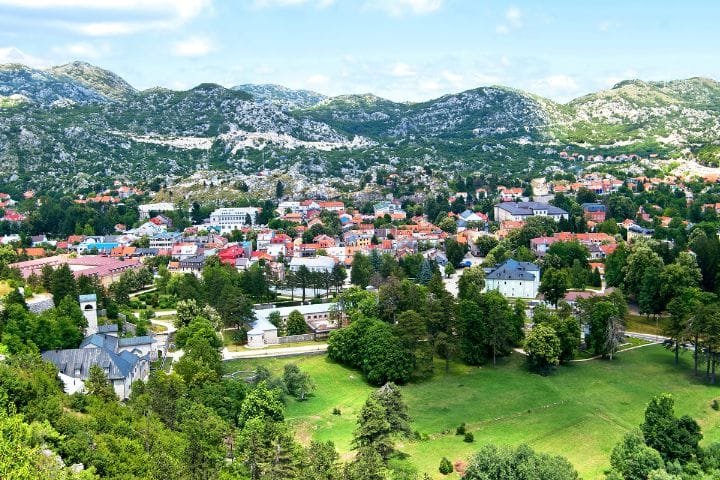
Cetinje, the former royal capital, preserves Montenegro’s royal heritage with museums, embassies, and traditional architecture that tell the story of this small nation’s remarkable independence struggles and cultural development. The National Museum provides context for understanding Montenegrin identity and historical significance.
Lovćen National Park rises directly behind the coast to 1,749-meter peaks, providing panoramic views that extend from the Adriatic Sea to Albanian Alps. The park’s diverse ecosystems range from Mediterranean coastal vegetation to alpine meadows within short elevation changes.
Njegoš Mausoleum at Lovćen’s summit commemorates Montenegro’s greatest poet-philosopher-ruler while providing 360-degree views that showcase the country’s incredible geographic diversity. The final approach involves 461 steps that lead to one of Europe’s most spectacular viewpoints.
The first time I reached Njegoš Mausoleum, the views over Montenegro’s mountains, coast, and neighboring countries provided a geographical context that helped me understand how this small nation maintained independence throughout turbulent Balkan history.
Traditional mountain villages throughout Lovćen preserve authentic highland culture where traditional crafts, agriculture, and customs continue largely unchanged. These communities offer insights into rural Montenegrin life and genuine hospitality.
Mountain cuisine in Lovćen area features hearty dishes adapted to highland conditions, including lamb, cheese, and traditional bread prepared using methods passed down through generations. Family restaurants serve meals that reflect seasonal availability and local traditions.
The historical significance of Cetinje and Lovćen extends beyond tourism to represent core elements of Montenegrin national identity, independence struggles, and cultural preservation that make this region essential for understanding the country’s character.
Royal heritage and mountain highlights:
- Cetinje, the royal capital, with museums and historical architecture
- Lovćen National Park diverse ecosystems from the coast to the alpine zones
- Njegoš Mausoleum panoramic views and cultural significance
- Traditional mountain villages preserving authentic highland culture
- Historical insights into Montenegrin independence and identity
Day 5: Žabljak and Durmitor National Park – Alpine Lakes and Dramatic Peaks
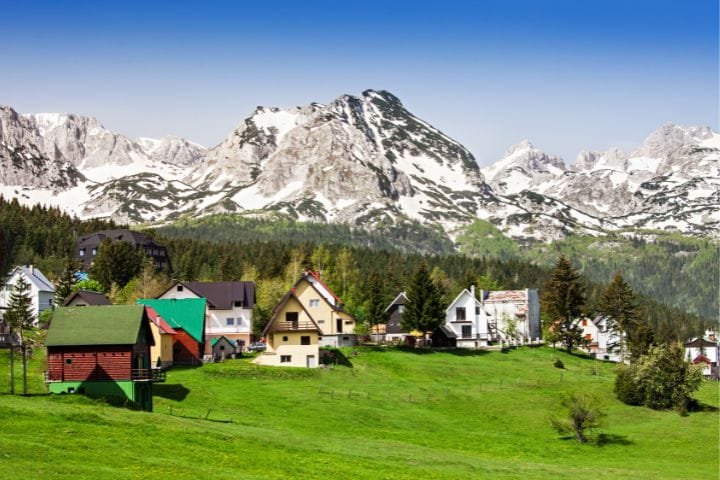
Black Lake (Crno Jezero) serves as Durmitor’s most accessible and spectacular attraction, with glacial origins creating a pristine mountain lake surrounded by dramatic peaks that exceed 2,500 meters in elevation. The easy walking path around the lake provides constant mountain reflections and photography opportunities.
Durmitor peaks and glacial lakes create some of Europe’s most dramatic mountain scenery, with 18 peaks over 2,000 meters and numerous glacial lakes scattered throughout pristine wilderness areas. The park’s position creates diverse hiking opportunities from easy lakeside walks to challenging peak ascents.
Tara River Canyon cuts Europe’s deepest gorge through pristine wilderness, creating spectacular scenery and adventure tourism opportunities, including white-water rafting, zip-lining, and canyon hiking that attract outdoor enthusiasts from throughout Europe.
Adventure activities in Durmitor include hiking trails ranging from family-friendly lakeside walks to challenging mountain peak ascents, plus water sports, mountain biking, and winter skiing that make this region Montenegro’s premier outdoor destination.
Mountain accommodation in Žabljak ranges from basic guesthouses to mountain lodges that cater to outdoor enthusiasts while providing authentic highland hospitality. Many properties offer traditional cuisine and local knowledge about hiking and adventure opportunities.
Traditional highland culture throughout Durmitor preserves customs adapted to harsh mountain conditions, including traditional crafts, music, and cuisine that demonstrate how communities survived in challenging environments while maintaining a distinct cultural identity.
Alpine adventure highlights:
- Black Lake’s pristine glacial waters with dramatic peak reflections
- Durmitor mountain peaks providing challenging hiking and spectacular views
- Tara River Canyon adventure activities and Europe’s deepest gorge
- Diverse outdoor opportunities from easy walks to extreme adventures
- Authentic mountain culture and traditional highland hospitality
Day 6: Northern Montenegro – Biogradska Gora and Pristine Wilderness
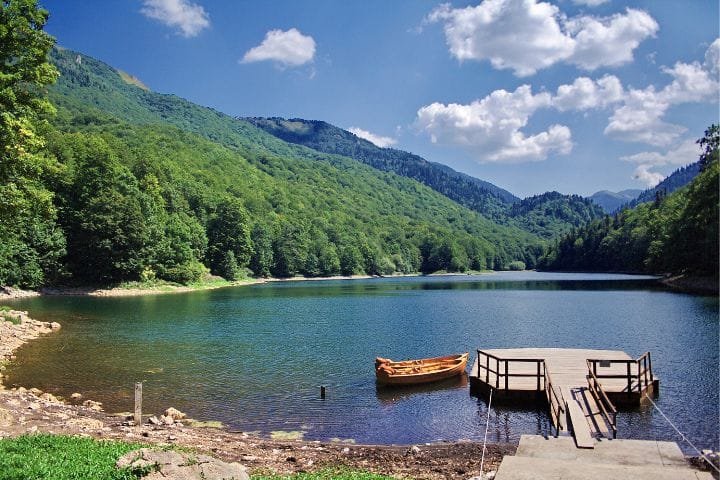
Biogradska Gora National Park protects one of Europe’s last primeval forests with trees exceeding 500 years old and ecosystems that demonstrate how Balkan wilderness appeared before human impact. The park’s compact size allows comprehensive exploration while maintaining pristine conditions.
Biogradsko Lake provides easy access to ancient forest environments with wooden walkways and hiking trails that showcase diverse plant and animal communities thriving in protected wilderness. The lake’s glacial origins create pristine waters reflecting ancient trees and surrounding peaks.
Ancient forest exploration reveals ecosystems unchanged for centuries, with massive trees, diverse wildlife, and pristine conditions that provide insights into European wilderness before extensive human development. The forest’s protection ensures the continuation of natural processes.
During one early morning hike around Biogradsko Lake, the complete silence broken only by bird calls and wind through ancient trees created a wilderness experience impossible to find in more developed European destinations.
Traditional mountain communities around Biogradska Gora maintain agricultural and pastoral traditions adapted to mountain conditions, with families still practicing seasonal migrations and traditional crafts that demonstrate sustainable highland living.
Kolašin town serves as a base for exploring northern Montenegro’s wilderness areas while providing modern amenities and adventure tourism services. The town’s position between mountain ranges creates access to diverse outdoor activities and cultural experiences.
Authentic highland cuisine features ingredients and preparation methods adapted to mountain conditions, including preserved meats, mountain cheeses, and traditional bread that sustained highland communities through challenging seasons.
Adventure tourism opportunities in northern Montenegro include hiking, mountain biking, river activities, and winter sports that attract outdoor enthusiasts seeking authentic wilderness experiences in pristine natural environments.
Northern wilderness highlights:
- Biogradska Gora ancient forest with 500-year-old trees
- Pristine lake and ecosystem exploration in protected wilderness
- Traditional mountain communities maintaining sustainable practices
- Kolašin adventure tourism base with modern amenities
- Authentic highland cuisine reflecting traditional mountain survival
Day 7: Return Route – Podgorica and Final Explorations
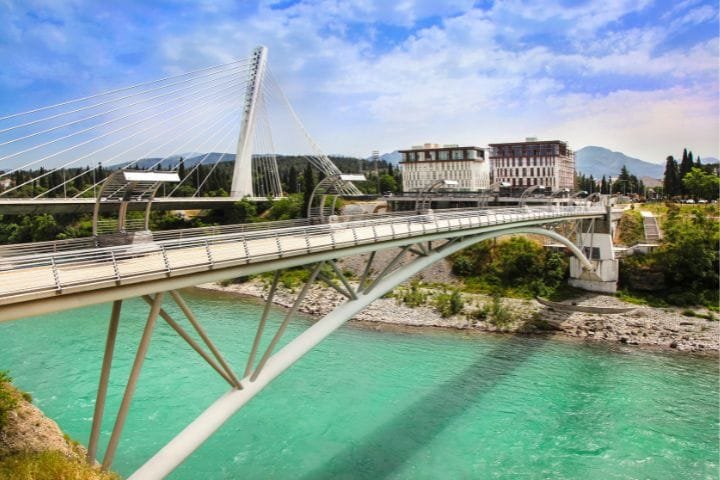
Podgorica, the capital city, represents modern Montenegro with contemporary development, shopping, dining, and cultural attractions that contrast with traditional mountain and coastal communities visited throughout the week. The city provides insights into contemporary Montenegrin life and development.
Alternative coastal return routes via Bar and Ulcinj provide different perspectives on Montenegro’s Adriatic coastline, with Bar offering ferry connections to Italy and Ulcinj showcasing Albanian cultural influences and pristine beaches extending toward the Albanian border.
Last-minute shopping opportunities in Podgorica include traditional crafts, local products, and souvenirs that represent Montenegro’s diverse regions and cultural traditions. The capital’s markets and shops offer a better selection than those in smaller towns visited earlier.
Departure logistics from Podgorica airport provide convenient international connections, though the drive to Dubrovnik airport in Croatia offers additional sightseeing opportunities for travelers continuing Balkan adventures or requiring specific flight connections.
Reflection on Montenegro’s diversity after a week of exploration reveals how this small country delivers experiences typically requiring much larger territories – from Mediterranean beaches to alpine peaks, medieval architecture to pristine wilderness, all accessible within reasonable driving distances.
During my first complete Montenegro road trip, arriving back in Podgorica after experiencing such diverse landscapes and cultures made me realize how efficiently this small country showcases the entire spectrum of European geographic and cultural diversity.
Final day considerations:
- Podgorica, the modern capital, contrasting with traditional areas visited
- Alternative coastal routes providing different Adriatic perspectives
- Shopping opportunities for traditional crafts and local products
- Flexible departure logistics accommodating various travel plans
- Appreciation for Montenegro’s remarkable diversity within a compact territory
Essential Montenegro Road Trip Planning
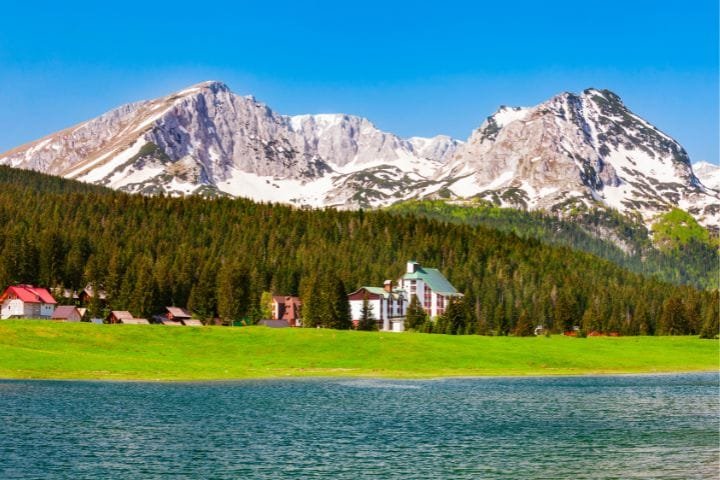
The best time to visit balances weather conditions with tourist crowds and road accessibility. Late spring (May-June) and early autumn (September-October) provide optimal conditions with comfortable temperatures, manageable crowds, and reliable road access to mountain areas.
Summer (July-August) offers the warmest weather for coastal and mountain activities but brings peak crowds and the highest accommodation prices. Winter visits limit mountain access but provide authentic local experiences and significantly lower costs.
Driving requirements include valid international driving permits for most visitors, comprehensive vehicle insurance, and an understanding of local traffic regulations. Montenegro’s mountainous terrain requires confident driving skills and proper vehicle maintenance.
Currency and language basics help with daily interactions, though English is widely spoken in tourist areas. The euro is Montenegro’s official currency, simplifying financial planning for European travelers.
Cultural etiquette emphasizes respect for traditional customs, religious sites, and environmental protection. Montenegrins appreciate visitors who show genuine interest in local culture and history.
Accommodation booking strategies should account for limited options in mountain areas and seasonal closures that affect availability. Advance booking becomes essential during peak season, while shoulder seasons offer more flexibility.
Border crossing considerations for international travelers include proper documentation and understanding of neighboring country requirements. Montenegro’s EU candidacy status affects entry requirements and travel procedures.
Planning essentials:
- May-June and September-October provide optimal weather and manageable crowds
- International driving permits and comprehensive insurance are required
- Euro currency and basic language preparation are helpful
- Respect for local customs and environmental protection is essential
- Advance accommodation booking is crucial during peak season
🌄 Continue Your Coastal Journey
Ideal if you’re arriving from Croatia or extending north after Kotor.
• Head up the Dalmatian Coast toward Split and Zadar → Dalmatian Coast Road Trip Guide
• Add a Plitvice waterfalls detour before or after the coast → Plitvice to Split Road Trip Tips
• Travel the full Croatia stretch to Dubrovnik → Croatia Road Trip: Zagreb to Dubrovnik
Practical Driving Tips and Route Navigation
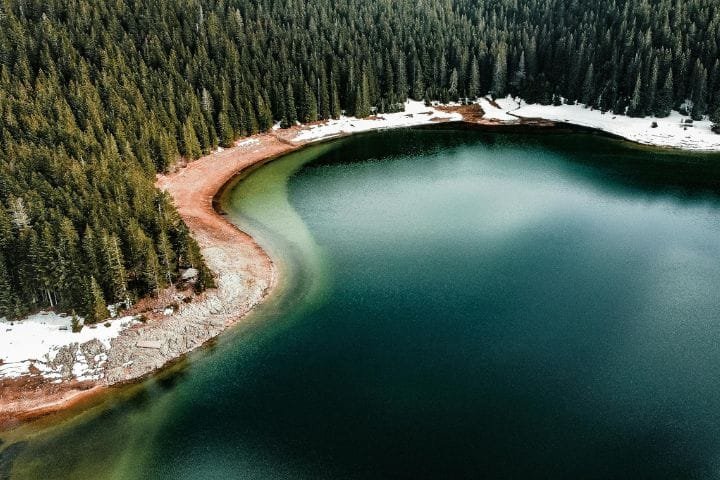
Mountain road driving requires understanding steep grades, narrow passages, and seasonal conditions that can affect driving safety and accessibility. Many mountain routes have limited guardrails and require confident driving skills.
GPS navigation and offline maps work reliably in most areas, though downloading offline maps provides backup for remote mountain regions with limited cellular coverage. Road signage is generally good in multiple languages.
Fuel availability is adequate along main routes but becomes limited in remote mountain areas. Filling up in larger towns prevents range anxiety during mountain exploration, where stations may be widely spaced.
Parking strategies vary dramatically between medieval coastal towns with limited space and mountain areas with abundant but sometimes unpaved parking. Understanding local regulations prevents fines and complications.
Emergency contacts include Montenegrin emergency services (112) and roadside assistance programs. Having these numbers programmed and understanding basic emergency procedures provides peace of mind for mountain driving.
Road condition monitoring becomes important for mountain routes where weather can create hazardous conditions. Local information sources provide updates on accessibility and safety conditions.
Driving safety recommendations:
- Mountain driving requires confidence and proper vehicle maintenance
- Download offline maps for remote areas with limited cellular service
- Fuel up in larger towns before entering remote mountain regions
- Understand parking regulations in medieval towns and tourist areas
- Program emergency contacts and understand basic assistance procedures
Hidden Gems and Off-the-Beaten-Path Stops
Traditional villages throughout Montenegro preserve an authentic culture where traditional crafts, agriculture, and customs continue largely unchanged by tourism development. These communities offer genuine insights into Montenegrin rural life and hospitality.
Secret viewpoints accessible by short hikes or scenic detours provide spectacular photography opportunities without crowds found at famous locations. Local knowledge helps identify these special places.
Local festivals and cultural events throughout the year celebrate traditional music, dance, food, and religious traditions while providing authentic cultural experiences that connect visitors to genuine community celebrations.
One of my favorite discoveries was stumbling upon a traditional wedding celebration in a mountain village, where the family invited us to join their feast and share in customs that have continued for generations.
Artisan workshops in rural areas maintain traditional crafts, including woodworking, textile production, and metalwork, that demonstrate skills passed down through generations while adapting to contemporary markets.
Authentic dining experiences in family-run restaurants serve traditional recipes using local ingredients and preparation methods that reflect regional specialties and seasonal availability.
Hidden discovery highlights:
- Traditional villages maintaining authentic rural culture and customs
- Secret viewpoints providing spectacular photography without crowds
- Local festivals celebrating traditional music, dance, and food
- Artisan workshops demonstrating traditional crafts and techniques
- Family restaurants serving authentic regional cuisine and hospitality
Plan Your Trip with Our Favorite Booking Tools
Budget Planning and Cost Considerations
Daily budget expectations vary significantly based on accommodation choices, dining preferences, and activity levels. Budget travelers can manage on €30-50 daily, while mid-range comfort requires €75-125, and luxury experiences cost €150+ per day.
Accommodation costs range from basic guesthouses (€20-40) to luxury hotels (€150-300+), with significant seasonal variations. Mountain areas typically offer better value than coastal destinations during peak season.
Dining price variations show dramatic differences between tourist restaurants in popular areas and authentic local establishments. Traditional family restaurants often provide better food at significantly lower prices than tourist-focused venues.
Activity and entrance fees for national parks, museums, and adventure activities remain reasonable compared to Western European standards. National park entries typically cost €2-5, while guided activities range €20-100 depending on complexity.
Money-saving strategies include staying in guesthouses, eating at local restaurants, visiting during shoulder seasons, and combining multiple activities in single locations to reduce transportation costs.
Transportation costs for rental cars, fuel, and tolls remain moderate, though mountain driving can increase fuel consumption. Parking fees in popular areas add to daily expenses but remain reasonable.
Budget planning recommendations:
- Daily budgets: €30-50 budget, €75-125 mid-range, €150+ luxury
- Accommodation varies dramatically by season and location
- Local restaurants provide better value than tourist-focused venues
- National park and activity fees remain reasonable
- Shoulder season travel offers significant savings opportunities
Your Montenegro Adventure Awaits
This 7-day Montenegro road trip itinerary provides comprehensive exposure to one of Europe’s most diverse and authentic destinations, where dramatic natural beauty combines with rich cultural heritage and genuine hospitality to create travel experiences that exceed expectations despite the country’s compact size.
From medieval coastal towns and pristine beaches to alpine lakes and traditional mountain communities, Montenegro rewards travelers who venture beyond obvious destinations to discover the authentic Balkan character that makes this country so special.
The key to successful Montenegro road trip adventures lies in embracing flexibility, respecting local customs, and allowing time for spontaneous discoveries that reveal why this hidden gem continues to captivate travelers seeking authentic European experiences away from overcrowded tourist destinations.
Plan thoughtfully, drive safely, and prepare for a week that showcases Montenegro’s incredible diversity while providing insights into Balkan culture, history, and natural beauty that will inspire future returns to this remarkable country!
🗺️ FAQs: Montenegro Road Trip Itinerary
How many days do you need for a road trip in Montenegro?
7 days is ideal to explore Montenegro’s highlights, including the Bay of Kotor, Durmitor National Park, the Adriatic coast, and hidden mountain villages — all at a relaxed pace.
Is driving in Montenegro safe for tourists?
Yes, driving in Montenegro is generally safe. Roads are well-maintained on major routes, but mountain and coastal roads can be narrow and winding. Drive alertly and avoid driving at night in remote areas.
Do you need an international driving permit in Montenegro?
Most visitors from the EU, UK, USA, Canada, and Australia can drive with their national license for short stays. However, carrying an International Driving Permit (IDP) is recommended and sometimes required by rental agencies.
What is the best route for a 7-day Montenegro road trip?
A popular loop starts in Podgorica or Tivat, includes Kotor, Budva, Cetinje, Lovćen, Lake Skadar, Durmitor National Park, and the Tara River Canyon — with options to add Ostrog Monastery or northern villages.
Can you combine a Montenegro road trip with neighboring countries?
Absolutely. Montenegro pairs well with Croatia, Bosnia & Herzegovina, and Albania. Just be sure your rental car is allowed to cross borders and carry the required documents and insurance.
🌍 Explore More of the Balkans
Perfect if Montenegro is part of a longer loop.
• Discover Balkan hidden gems beyond major tourist routes → Balkan Hidden Gems Road Trip (History Routes)
• Pick beginner-friendly Balkan routes perfect for first-timer drivers → Beginner Balkan Routes & Tips
• Learn smart safety practices for mountain and rural drives → Balkan Driving Safety Tips
💬 We’d love to hear from you!
Have questions, tips, or personal travel stories to share? Drop them in the comments below — your insights help fellow travelers plan their adventures too.

